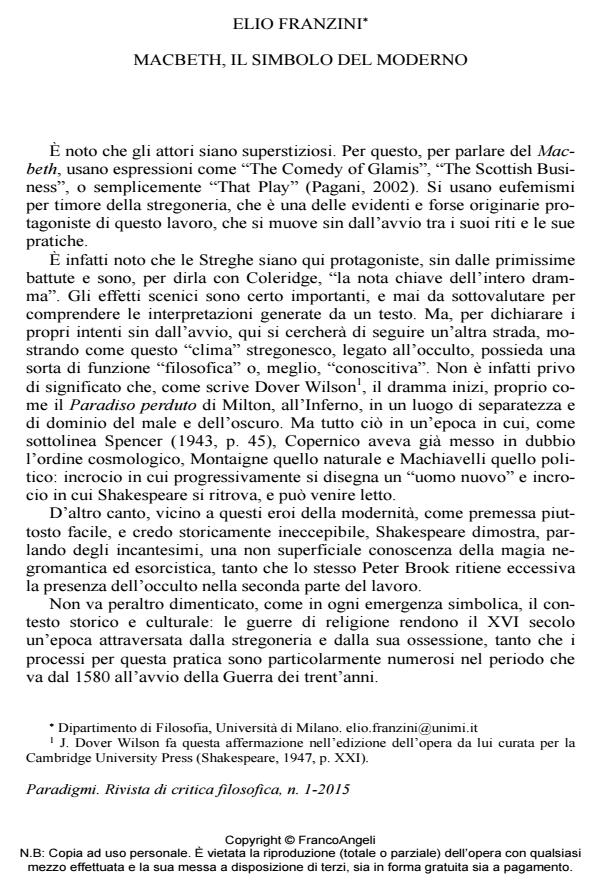Macbeth, the Symbol of Modernity
Journal title PARADIGMI
Author/s Elio Franzini
Publishing Year 2015 Issue 2015/1
Language Italian Pages 11 P. 143-153 File size 52 KB
DOI 10.3280/PARA2015-001010
DOI is like a bar code for intellectual property: to have more infomation
click here
Below, you can see the article first page
If you want to buy this article in PDF format, you can do it, following the instructions to buy download credits

FrancoAngeli is member of Publishers International Linking Association, Inc (PILA), a not-for-profit association which run the CrossRef service enabling links to and from online scholarly content.
In Macbeth, Shakespeare introduces a supernatural dimension that purposively conspires against Macbeth and his kingdom. On the level of human evil, Shakespeare’s Scottish tragedy is about Macbeth’s bloody rise to power, including the murder of the Scottish king, Duncan, and the guilt-ridden pathology of evil deeds generating still more evil deeds. Here Shakespeare marks the birth of a new conception of power and kingship. Evil will be a stronger and more influential actor in drama. This diabolic division is the sign of an era which is characterized socially by the loss of certainty, and the realization that certainty can never be established, once and for all. In this direction it is perhaps possible to interpret Macbeth’s drama as an attempt to establish a new symbolic order, specific to the modern era.
Keywords: Dissociation, Evil, Modern Era, Power, Supernatural Dimension, Symbol.
Elio Franzini, Macbeth, il simbolo del moderno in "PARADIGMI" 1/2015, pp 143-153, DOI: 10.3280/PARA2015-001010